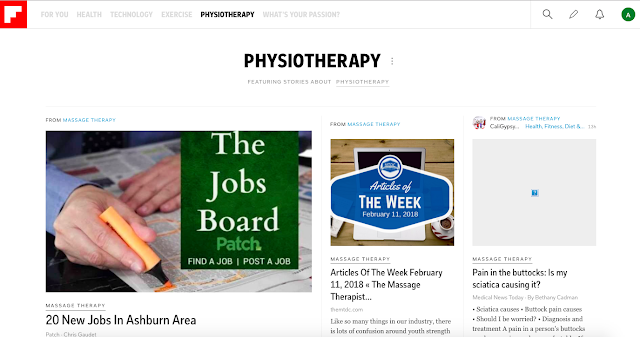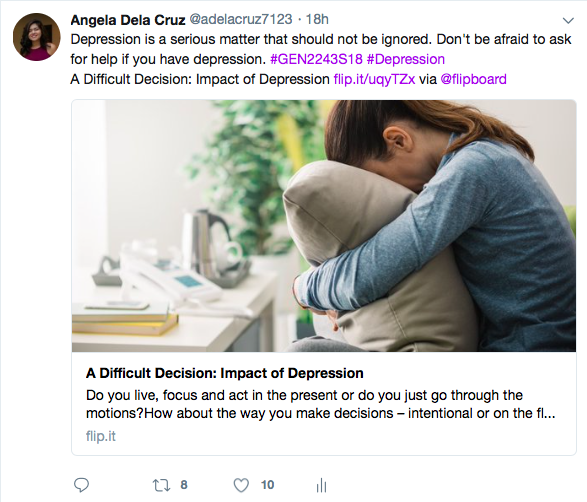Content Curation
By: Angela Dela Cruz
Content curation is the organization and filtering of relevant digital content. In this weeks's class, we learned about multiple sites that find content relating to our professions and our interests. These sites were simple to use and will be a beneficial tool in order to develop our professional learning network since they contain hundreds of articles relating to our future career. These sources are helpful since they suggest and gather more articles based on what we read, helping us save time from searching for documents.
One of the sites we learned about was Flipboard, which is a personalized site where you can choose the articles you read based on your own interests. When first creating your account you choose categories that you would be interested in reading, such as politics, gaming, health, travel, science, and many more. The categories may be customized at any time and users are always allowed to change their interests. You can also search up more specific topics that you might be interested in which is what I did to follow a magazine about physical therapy, and you are able to share it on social media. By developing your own personal magazine, it prevents clutter as the user has the power to choose what they see.
Another site we utilized was Paper.li, which gives users access to an "ever-expanding universe of articles, blog posts, and rich media content". Paper.li is a site that ultimately allows users to create a digital newspaper, and similar to Flipboard it gives users a lot of freedom for customization. In this site, users are able to add their own content sources. Most of the sources I pulled from had content about physical therapy and these ranged from tweets mentioning physical therapy, a youtube channel on health news, or even websites about physical therapy. A very useful aspect of Paper.li is that it chooses articles based on what you read saving us time from manually scouring the web. We can share interesting articles on twitter or even set it to automatically post an article every 24 hours.
In an article by Tim Lenahan, he talks about the benefits of running your own digital newspaper since you have more authority. Paper.li allows this as users directly choose content sources thus reducing a traffic jam of articles. It can get as specific as choosing items from hashtags on twitter. One of the advantages that comes with Paper.li is that the site integrates with Twitter, letting people add links tweeted by those they follow or even links they have tweeted. There is also an interesting feature where Paper.li will automatically tweet an article every 24 hours and you can set it at a certain time.
The last site we talked about in class was basically a digital notebook called Microsoft OneNote. With OneNote people can type notes or record audio, add pictures from their phone, or even write/sketch ideas. It allows for organization since there are folders or sections you can place notes into, and it is shareable for other people to edit. A really cool feature about OneNote is that you can search for certain notes by typing a word, but it also recognizes words from pictures of handwritten documents/drawings.
One of the sites we learned about was Flipboard, which is a personalized site where you can choose the articles you read based on your own interests. When first creating your account you choose categories that you would be interested in reading, such as politics, gaming, health, travel, science, and many more. The categories may be customized at any time and users are always allowed to change their interests. You can also search up more specific topics that you might be interested in which is what I did to follow a magazine about physical therapy, and you are able to share it on social media. By developing your own personal magazine, it prevents clutter as the user has the power to choose what they see.
Another site we utilized was Paper.li, which gives users access to an "ever-expanding universe of articles, blog posts, and rich media content". Paper.li is a site that ultimately allows users to create a digital newspaper, and similar to Flipboard it gives users a lot of freedom for customization. In this site, users are able to add their own content sources. Most of the sources I pulled from had content about physical therapy and these ranged from tweets mentioning physical therapy, a youtube channel on health news, or even websites about physical therapy. A very useful aspect of Paper.li is that it chooses articles based on what you read saving us time from manually scouring the web. We can share interesting articles on twitter or even set it to automatically post an article every 24 hours.
In an article by Tim Lenahan, he talks about the benefits of running your own digital newspaper since you have more authority. Paper.li allows this as users directly choose content sources thus reducing a traffic jam of articles. It can get as specific as choosing items from hashtags on twitter. One of the advantages that comes with Paper.li is that the site integrates with Twitter, letting people add links tweeted by those they follow or even links they have tweeted. There is also an interesting feature where Paper.li will automatically tweet an article every 24 hours and you can set it at a certain time.
The last site we talked about in class was basically a digital notebook called Microsoft OneNote. With OneNote people can type notes or record audio, add pictures from their phone, or even write/sketch ideas. It allows for organization since there are folders or sections you can place notes into, and it is shareable for other people to edit. A really cool feature about OneNote is that you can search for certain notes by typing a word, but it also recognizes words from pictures of handwritten documents/drawings.
An article by Joel Lee talks about many interesting features that comes with OneNote. Users can create subpages, and can collapse and hide them to prevent clutter. Subpages can further be made for subpages. Using 'Page Version', you are also able to see who and when has edited a page, whether it be you or another user. Organization can be improved by changing the color of notebooks and naming them.
In addition, OneNote can solve equations you've handwritten. An article by Tom Warren tells users that they can utilize ink math assistant. This tool converts handwritten equations into text and gives step-by step instructions on how to complete it. This new math equation option will help students save a lot of time and money, since they no longer have to buy solutions to get the right answer.
In 'lol...OMG!', chapter three talks about the permanence of content on the internet. Once someone posts something on the internet, they are giving up their control over it as people are able to download it and save it forever. There is a website called Way Back Machine that lets you see what a site looked like at any given date from the past. I tested it on popular youtube sensation 'Pewdiepie' and saw that his subscriber count was 1,423,403 on August 10th 2012, compared to today where he has 60 million subscribers.
Chapter four of the book shows the repercussions of posting something negative online. After a UCLA student created a video of her ranting about Asians, she has received death threats and harassment for her insensitivity. The video has been downloaded and published on multiple sites, spreading like a plague and gaining more attraction. Chapter five discusses the causes of these mistakes, such as the ambiguity effect. People tend to avoid the unknown but we are presented with unclear information everyday online. Before we post something we should ask ourselves, Who will see what I am posting? Will people find it funny or offensive? Instead, people choose to avoid those questions and make it simpler by telling themselves it is only a joke that their friends will see. This carelessness is dangerous to one's reputation online which will follow them forever.




Comments
Post a Comment